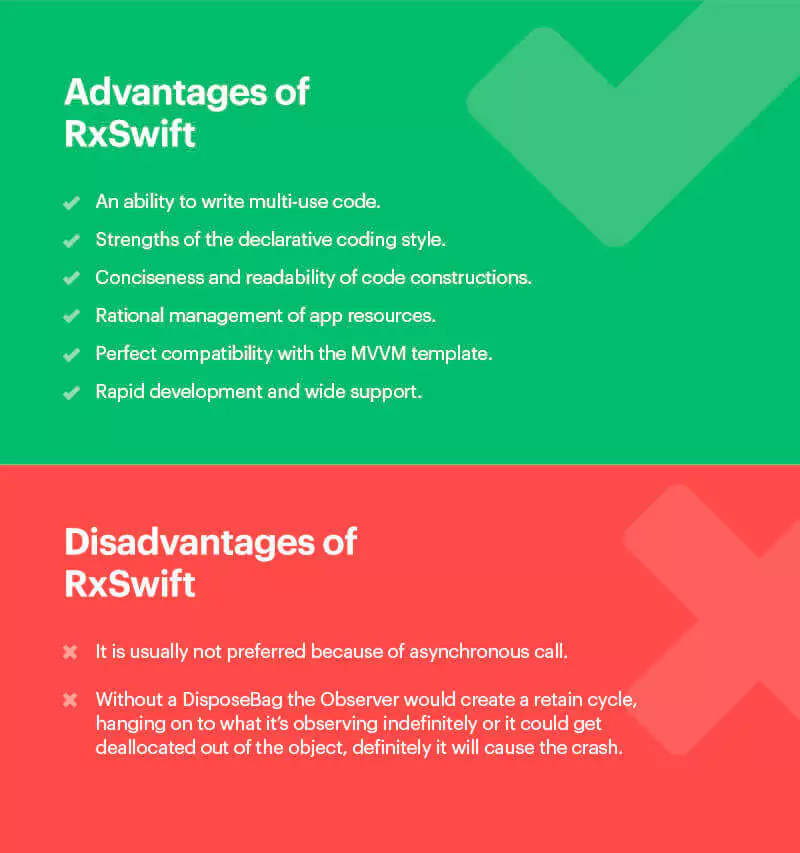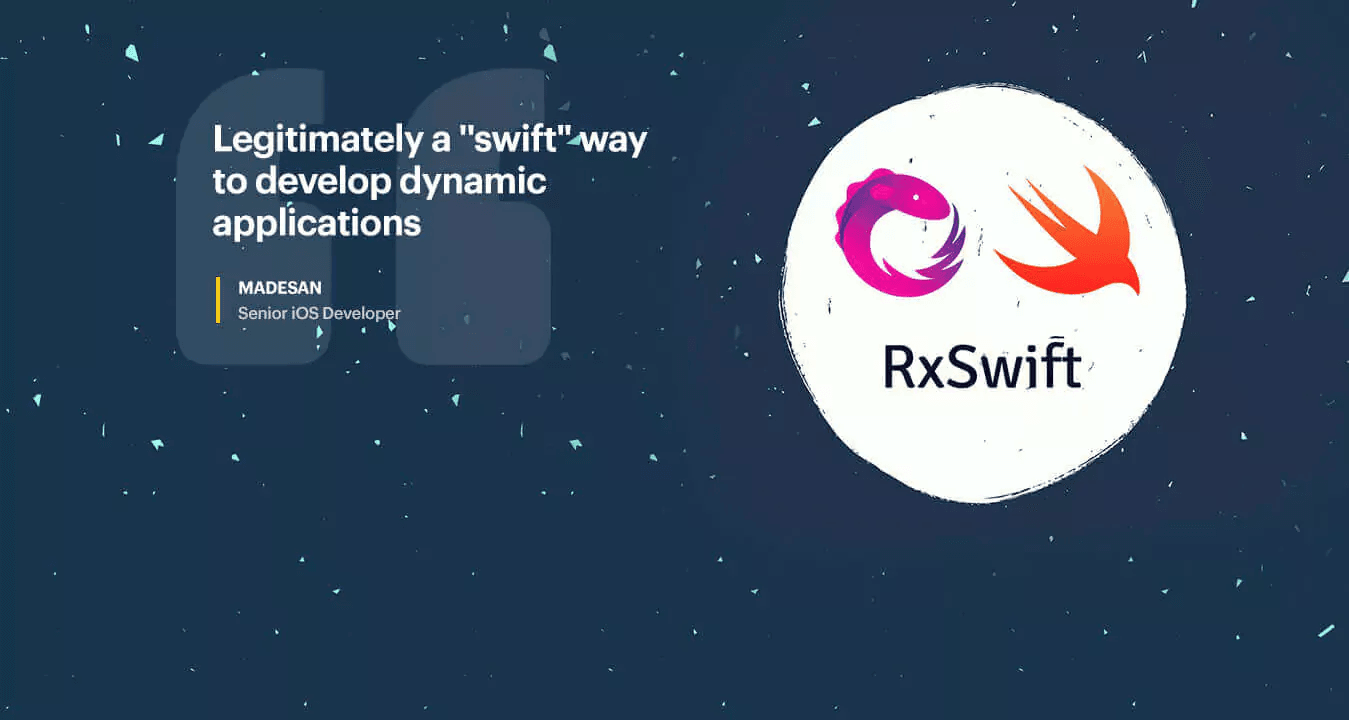Introduction:
Rx-Swift is a reactive programming library in iOS app development. It is a multi-platform standard, and its difficult-to-handle asynchronous code in Swift becomes much easier in Rx-Swift.
RxSwift makes it easy to develop dynamic applications that respond to changes in data and respond to user events. Ultimately, it solves the issues related to asynchronous development.
Related Terms for RxSwift:
You can say RxSwift is:
1. Functional reactive programming (FRP)
2. Reactive Programming
3. Functional Programming
4. An Observable.
5. An Observer.
6. A Dispose bag.
1. Functional Programming:
Functional programming is an alternative to imperative coding. It allows us to express the system code logic from mathematical relations (e.g. functions) instead of a strict sequence of actions.
For e.g.
People feel very guilty to write code like the sample below with normal swift programming.
Alamofire.request(.POST, “SignUp”, parameters: ["userName": "maddy”, "passWord": “12345678”])
.responseJSON(completionHandler: { (firedResponse) -> Void in
Alamofire.request(.GET, “UserInfo” + firedResponse.result.value)
.responseJSON(completionHandler: { myUserInfoResponse in
Alamofire.request(.GET, “EmployeeList” + myUserInfoResponse.result.value)
.responseJSON(completionHandler: { friendListResponse in
Alamofire.request(.GET, “PresentEmployees” + friendListResponse.result.value)
.responseJSON(completionHandler: {
})
})
})
Alamofire.request(.GET, “AccountDetails” + firedResponse.result.value)
.responseJSON(completionHandler: {
})
})
Any guesses, about what’s wrong with this code? There are multiple Alamofire requests, and if you are not using Alamofire it will be like AFNetworking with HTTP requests. Have you ever seen nested block-based code working the way you intended? You can’t tell what will happen during run-time.
You can create multiple functions in RxSwift instead of using nested block-based code like below:
func rx_login(userName: String, passWord: String) -> Observable {
return create({ (observer) -> Disposable in
let postBody = [
"userName": userName,
"passWord": passWord
]
let request = Alamofire.request(.POST, "login", parameters: postBody)
.responseJSON(completionHandler: { (firedResponse) -> Void in
if let value = firedResponse.result.value {
observer.onNext(value)
observer.onCompleted()
} else if let error = firedResponse.result.error {
observer.onError(error)
}
})
return AnonymousDisposable{
request.cancel()
}
})
}
2. Reactive Programming:
i. Reactive programming is about writing code that knows how to react to new changes dynamically like new user input or data and changes of the new states.
ii. Reactive programming will automatically change all the variables attached to the changes in the performance of an application over run-time.
3. Observable:
i. Observables are type-safe events that fire and push different data values over run-time. Observables are something that emits notifications of a change.
ii. Observables are easy to create.
Just(5) // Observable
If you needed to take an array from the events, we can do like this.
[1,2,3,4,5,6,7,8].toObservable() // Observable
If you want to create something like an API, which will upload some files to the server or saves data in the local database swell.
create { (observer: AnyObserver) -> Disposable in
return AnonymousDisposable {
}
}
4. Observer:
i. Observer is something that informs an observable about new changes.
ii. We can have multiple Observers to listen for a single observable so that when the observable gets changed it will notify all the observers at the same time.
5. Dispose bag:
RxSwift has an additional tool to help deal with ARC and Memory Management which is called DisposeBag.
i. This is a virtual bag of Observer objects which are disposed of when the parent object is deallocated.
ii. When the deinit() method is scaled on the parent object which has a disposeBag as a property, the bag is emptied, and each disposable observer is automatically unsubscribed.
Additional features:
i. FRP is a tool for composing asynchronous and event-based programs with the help of observable sequences.
ii. There’s no need to worry about synchronisation, low-level threading, non-blocking I/O, thread safety, and concurrent data structures.
iii. The ‘observable’ can be employed as a universal, highly-compostable pattern. This way, you won’t have to use tons of patterns like completion blocks, target actions, delegations, and many others all at once.
In which cases we can use RxSwift?
i. When there is a frequent necessity to use KVO.
ii. To synchronize two requests.
iii. When you don’t want to busy yourself with delegates.
iv. To create modular code.

Conclusion:
As I said earlier, RxSwift is a reactive programming language so we can use this for small applications like small games. If we use this in bigger applications we have to dispose of all the objects manually, like objective-c. If you're looking for a reliable App Development Company in Bangalore, Appiness is available to assist you with your requirements.





